Media | Articles
Review: 2022 Subaru WRX Manual
The road felt like a secret, but then, it always has. Tall firs and redwoods north of Santa Cruz, trunks like Grecian columns over snaking pavement. The look is California as foretold, without the NIMBYism and housing insanity or any of the other stuff that makes so much of the Golden State feel like a cross between paradise and cruel joke.
Skyline Drive is just a road on a ridge above a city. If you are heading north, the Bay Area sits below, outside the passenger window, under a blanket of haze. The ocean is left, five miles to the west. When the wind is right, you can smell the fish.
I lived close by, once. Before the second tech boom really took hold, when everyone was talking about how San Francisco real estate could not possibly get any more expensive and still hold ordinary people, and then it did get more expensive, and then the ordinary people up and left, and they couldn’t stop talking about that. To know the old Bay Area often means to miss it. And know that it is probably not coming back.
This is fine, of course; some bits of existence are simply not meant to be dragged into the future. Which brings us to the 2022 Subaru WRX, and how I took one to Skyline a few weeks ago, and how it is possible to sit in a brand-new car with a legendary name, a machine Car People are supposed to like very much, and have the whole thing just ring… dead.
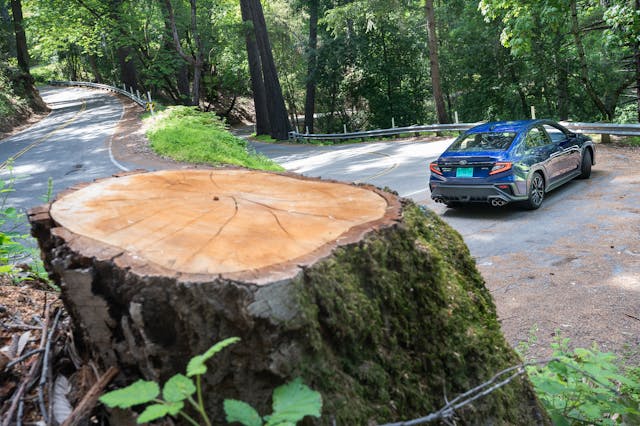
What we have here is a factory-fresh relic. A 271-hp, flat-four, all-wheel-drive, turbocharged, manual-transmission wooly mammoth, brand-new and given a ground-up redesign for 2022. But you cannot discuss Subaru or the WRX without noting where that car company has been and wants to go. In 2019, the last year before pandemic supply-chain problems, Subaru sold more than 700,000 cars in North America. In the same period, Toyota Motor North America moved almost 2.4 million. American Honda did 1.6 million. Mitsubishi, a waterline reference more sad than useful, saw just 121,000.
Marketplace
Buy and sell classics with confidence
The Toyota comparison is relevant. More than a decade ago, at the media launch of the all-new 2008 Impreza, Subaru representatives told journalists that the brand wanted to “be Toyota” in North America. I was in that crowd and I have read Where the Suckers Moon, and so I raised an eyebrow. In hindsight, I should have raised two. Toyota has spent long decades building products expressly designed to be something to everyone and everything to nobody. Subaru, by contrast, spent much of those decades struggling with image and focus, attempting to blend a past as a quirky niche manufacturer (Horizontally opposed engines for charmingly dubious reasons! Vermont Birkenstocks! Rally cars!) with modern mass needs.
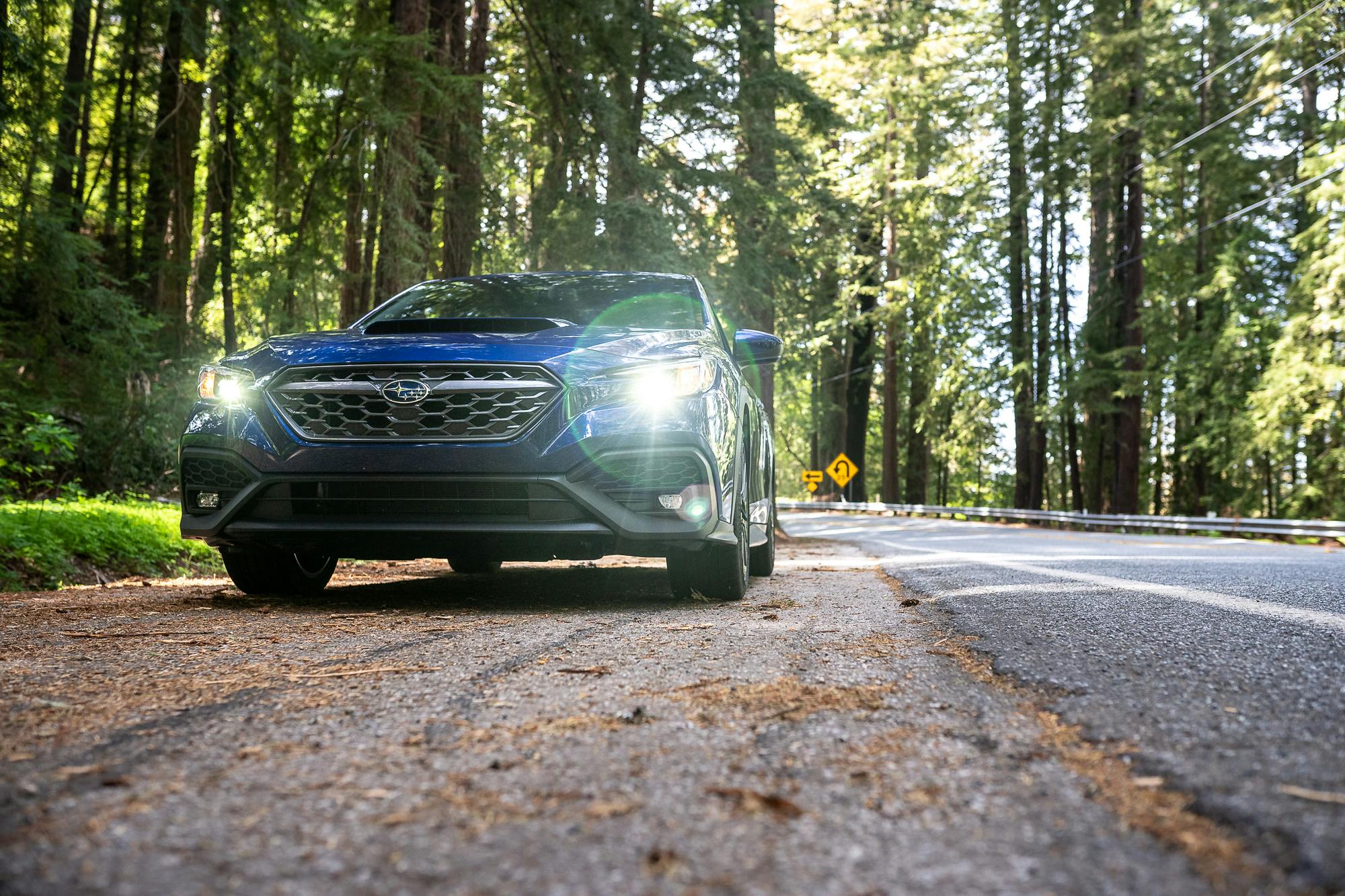
Result? The goal that once seemed impossible is now merely improbable. In 2010, Subaru sold 263,000 cars in America. By 2019, the company had bloomed to more than 700,000. The roots were not wholly abandoned, albeit not always for the better. (SUVs with… flat-fours? Thirty years of head gaskets as consumables! No more factory rally team, but we will sell you cars that remind you of those days, and that are consciously quirky, kinda!)
Strong-selling Subarus were once an acquired taste, with their quirky drivelines, logical interiors, and frameless windows; the company’s machines now feel more like department-store variations on a theme, AnyCar USA plus the sound of Colin McRae.
In 2008, the Impreza was Subaru’s volume leader. That perch is now held by the Forester SUV. The WRX, then as now, existed as submodel, a hot-rodded Impreza. When the name was launched, in 1992, Subaru said that it stood for World Rally eXperimental. As in World Rally Championship, where WRXs have won six titles and a record 46 rallies. Historically, the badge has meant turbocharging, all-wheel-drive, and big speed in subpar conditions. Also a sense of competition—with the Mitsubishi Evo, once the WRX’s showroom and WRC rival; with purebred sports cars, which offer more compromise but rarely more back-road pace; with Subaru’s traditionally tame image.
Witness now, as Monty Python said, the violence in the system: The Evo was discontinued in 2015. Subaru left the WRC in 2008, which makes the WRX no longer a homologation special, not built to legalize a road car for competition. The hot-rod WRX STI died last year and won’t return on the current Impreza platform. Nor is performance image a huge concern; Subaru’s own BRZ coupe carries that water nicely, a track-day and back-road favorite.
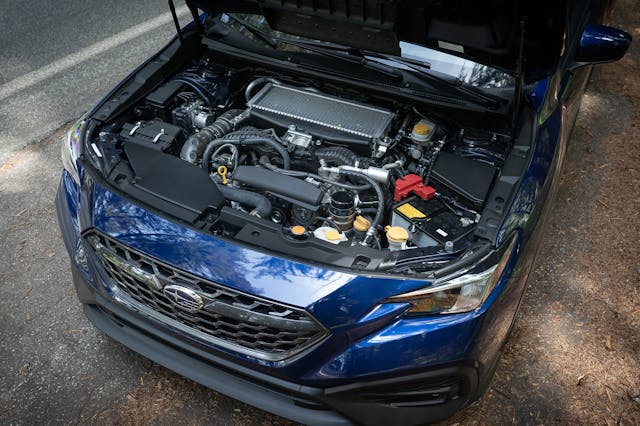
Which means the WRX is just sort of… here. The new engine, a 2.4-liter flat-four, makes 271 hp at 5600 rpm and 258 lb-ft at 2000. Its predecessor, a turbocharged 2.0-liter, produced 268 hp at 5600 rpm and 250 lb-ft at 2000.
The new WRX shares no exterior bodywork with the ordinary Impreza. It is also slightly wider and nearly three inches longer than the outgoing WRX. Subaru claims the new suspension is softer in tune; the driveline is said to be more isolated, for reduced NVH. There is an available CVT automatic, though our test car wore the standard six-speed manual.
We will now list the good stuff. Mostly because the rest makes the car awfully hard to love.
***
THE GOOD STUFF
- There are hints of WRX heritage. The short intercooler hood scoop, visible from behind the wheel. The traditionally lumpy exhaust note, like an underwater Volkswagen. The long front overhang. That famously agricultural—but satisfying!—shifter, where you can occasionally feel a shift cable sticking and squicking around in the sheath.
. - It is fun around town, obviously mechanical. The engine seems happiest and most linear in part-throttle commuting. As if it were intentionally designed to be fulfilling at two-tenths, in traffic.
. - It’s easy to forget how common that quality once was in new cars. The driveline feels purposeful and burbly at low speed, and smooth shifts are easy. You drive around relishing how the car knifes through traffic, as if you know something the rest of the world doesn’t.
. - The 2.4 is both smoother and less laggy than the old 2.0-liter. Albeit not by much.
. - Brake feel is nice: progressive, and short pedal travel.
. - That flat-four offers broad torque—peak grunt runs from 2000 to 5000 rpm. That said, the engine seems most content in the middle of the band. The angled tach (three grand is near 12 o’clock on the dial) has been WRX habit since 2015; a cynical person might note that it seems designed to con you into small throttle openings and short-shifting, for minimal turbo lag.
. - Sudden changes of direction are fun, helped by a relatively stiff rear suspension and differentials that quickly unlock. The rear axle follows the front quicker than you expect, given the long nose overhang and relatively long wheelbase.
. - In fine Subaru tradition, the front tires give up first. Driving quickly in tight quarters means being patient with the front rubber. You have to lean into the car’s substantial ability to pivot on closed throttle.
. - Turbo lag is significant. A charitable individual might recall historic kings of lag, perhaps the Porsche 930, and label this effect charmingly dramatic. If you’ve driven a modern Mercedes or BMW, you’ll roll your eyes.
. - As on the standard Impreza, outward visibility is the beans.
***
As for the rest: Start with that flat-four. It offers rubber-band power delivery and a flywheel seemingly made of lead. Redline runs begin with a face-plant of lag and too often end with a slam into the 6100-rpm limiter, because the engine gives no real torque taper or pitch change at high rpm, no hint of approaching end. You either watch the tach like a hawk or shift purposely low, shortchanged on rhythm.
Or take the basic chassis. The platform used here now underpins every new Subaru save the BRZ. While you do not immediately notice the new length and width, you do not not notice. As on the base Impreza, the rear seat is cramped for a five-foot-ten adult, headliner meeting hair. Ride quality is annoying at best and fidgety at worst—there’s a surprising amount of head-toss and stiff-kneed bobble, even lightly loaded and high in the available wheel travel.
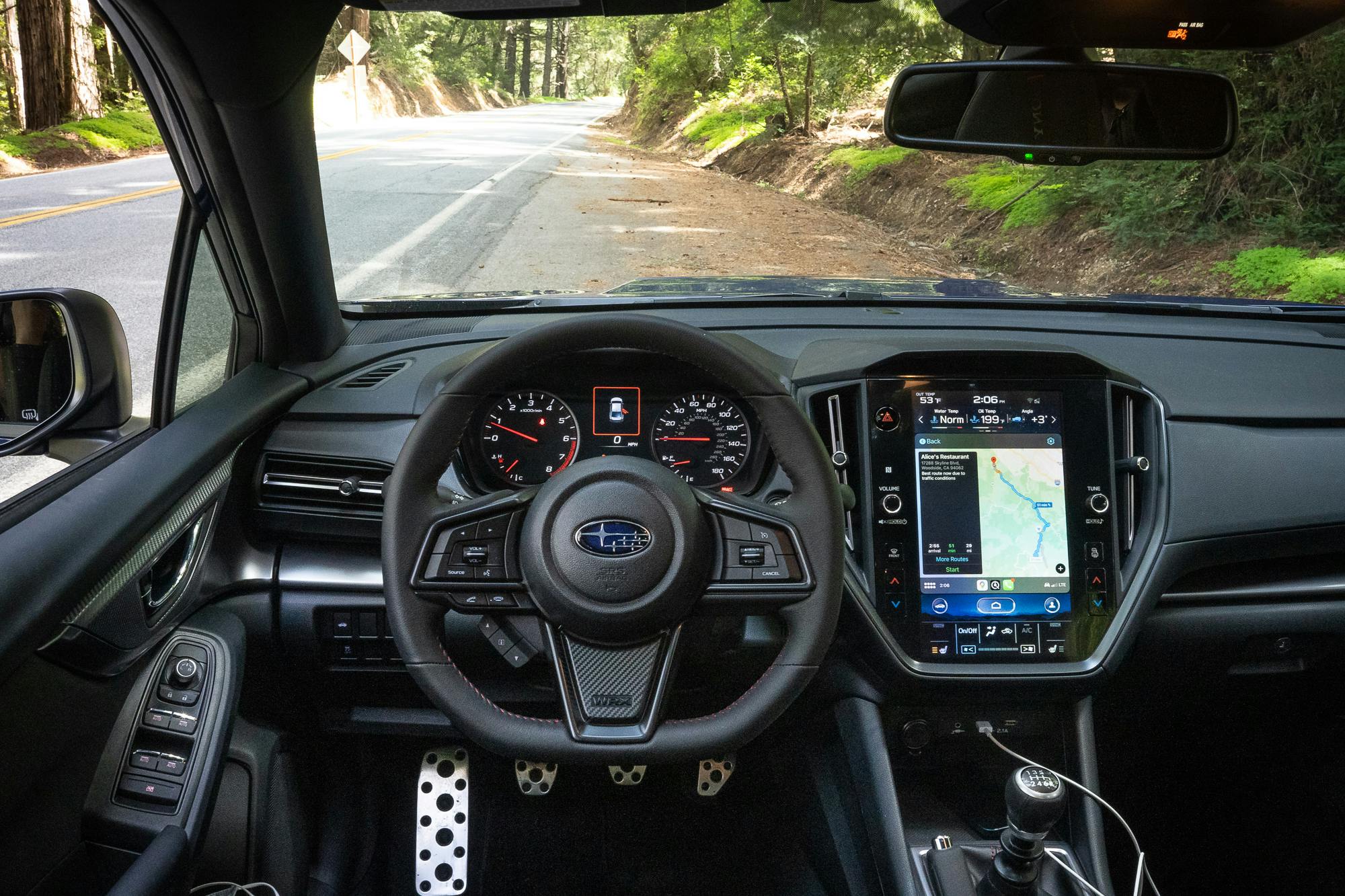
The base Impreza gets either a 6.5- or 8.0-inch infotainment screen. Neither feels small. Buy a WRX, you get an even larger, 11.6-inch unit. Its graphics look like a PlayStation menu from 2004. The UI is a clunky attention magnet, as if designed to keep your eyes off the road. That screen can remind you of birthdays and anniversaries or tell you the weather in a distant city. It can also show you throttle percentage or fore-aft chassis angle, instead of more traditional rally-car items like torque distribution and driveline temperature.
Department of redundancy department: The console screen can tell you if your coolant is COLD or NORM. Which is not wholly useless information, though it is doubled by the damped, and unit-free, coolant gauge at the bottom of the tach.
The steering offers very little feel; the wheel gives a hint of self-centering effort on initial turn-in, then goes essentially dead. Neither speed nor load will wake it, and the chassis isn’t particularly communicative, either. Road noise is extensive—highways send the factory Harman/Kardon stereo gutless, buried in road boom.
The death here is by a thousand cuts. WRX cabins are always noisy, you say? Sure, but when the end product gives such feedback chutzpah, who cares? Part of the charm, they tell you! On that note, isn’t it delightful how my test car’s electrical system bricked itself twice in 300 miles, ignition on, for at least ten minutes? Isn’t it neat how fender cladding can make a Subaru look like an early Nineties Volvo Cross Country or Audi Allroad, a cosplay leftover from the time when everyone wanted to sell an SUV, even if they didn’t actually have an SUV to sell? And really, you ask, doesn’t the joy of a fast Subaru come from hammering down some paved goat path while the shocks and suspension travel soak everything up?
Almost forgot: That talent is still there, if muted. The chassis feels stiff-legged, aimed mostly at smooth pavement.
Twenty years ago, this badge helped define a brand. Like the Mitsubishi Evo, the WRX didn’t initially come to America. When the two models were finally sold here, in the early 2000s, it was a Christmas morning: One day, this country had zero supercar-eating rally-homologation specials; the next, two of the greatest.
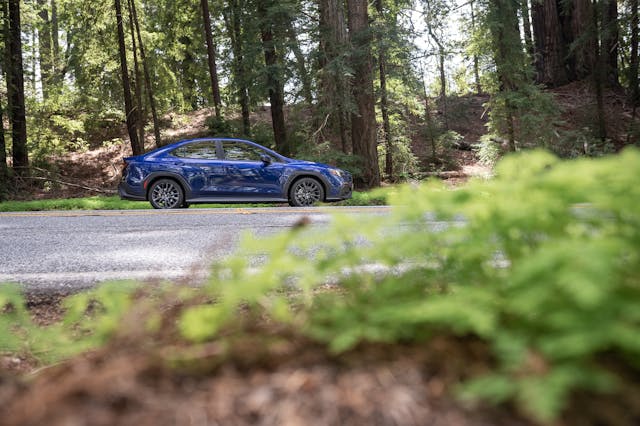
What’s left? Absent that moment, one excellent Mitsubishi, one factory WRC team, the STI? A hint of old Toyota. A news story without headline. A once passion-soaked car whose execution now feels too much like habit.
It seemed a secret, once. This is still a Subaru, still a WRX. But it’s iced with a sense of indifferent stewardship, and those three famous letters now land as just another car. An echo of the way things were, too concerned with where we’ve been to suss where we ought to go next.
***
2022 Subaru WRX Premium
Price: $30,600 / $33,100 (base / as-tested, Premium model)
Highs: A WRX as it ever was—a little larger and less talkative, but the same idea. Broad torque band, hugely tractable. Can be had with a manual.
Lows: Road noise, ride quality, competent but uninspiring engine and chassis. Disappointing fuel economy (19/26 city/highway with the manual, and the CVT is thirstier). Optional collision-avoidance system and adaptive cruise not available with a clutch pedal.
Summary: A respectable update for a classic name that just never feels special.


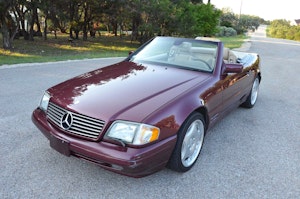






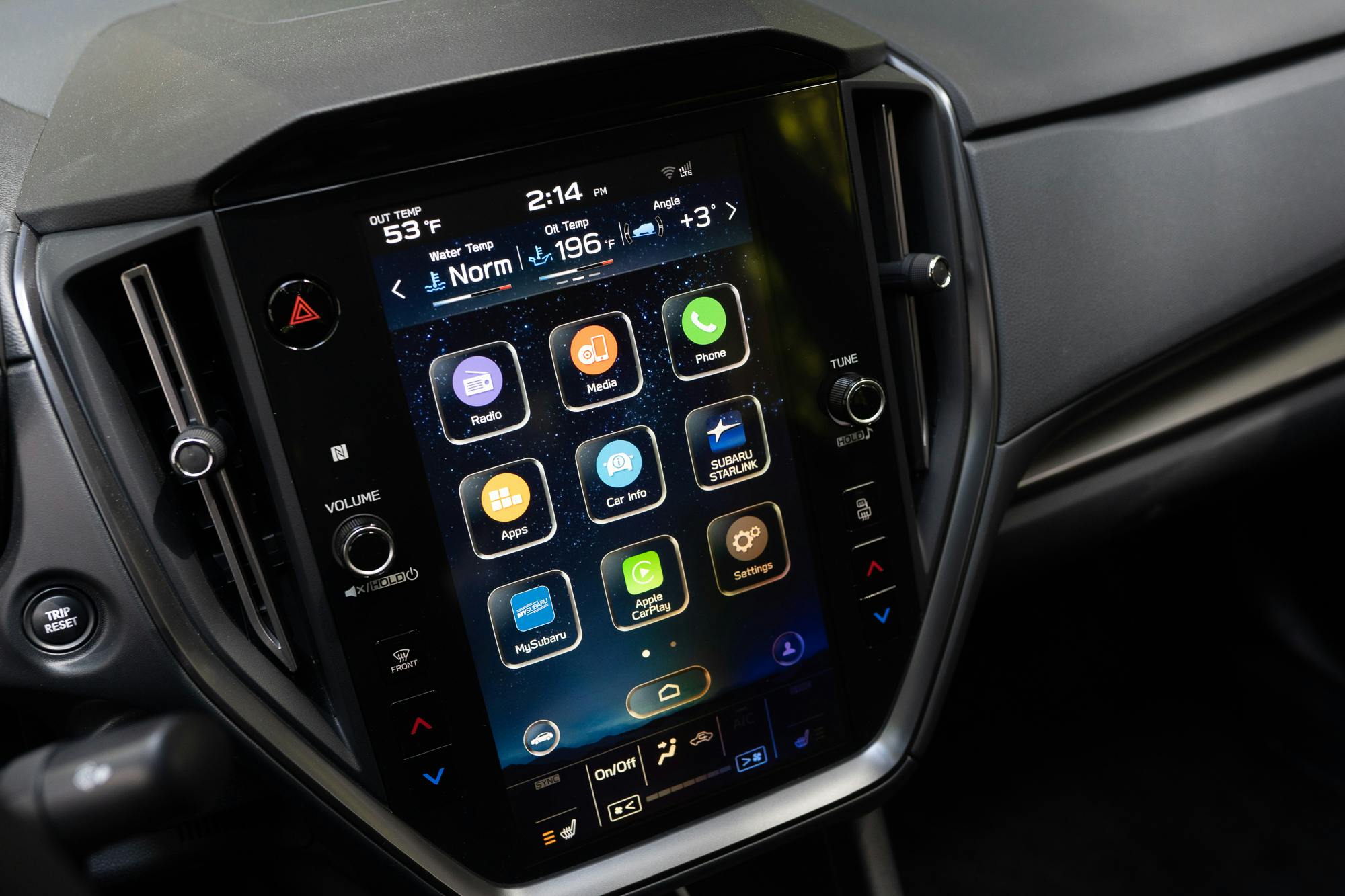
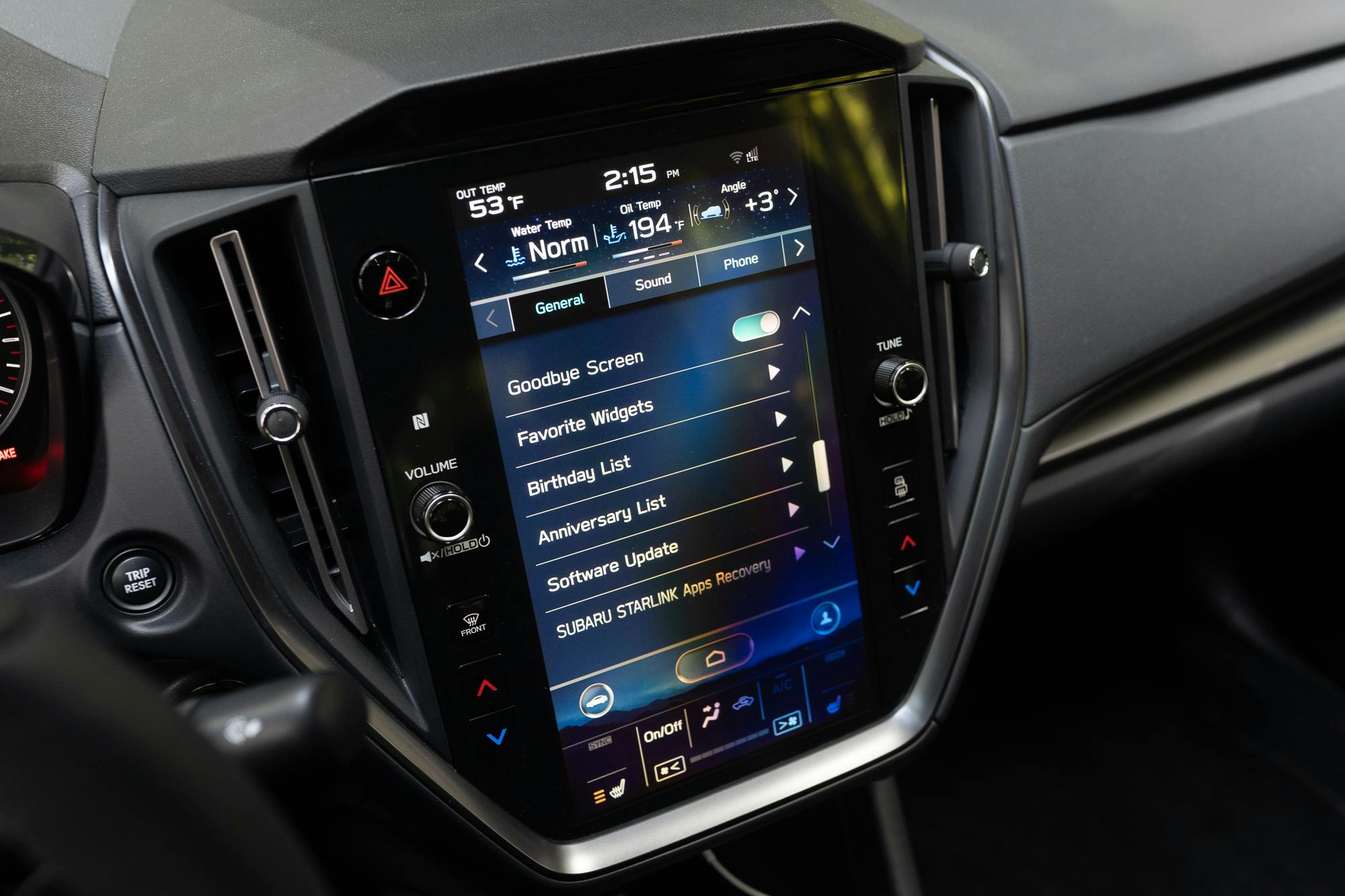
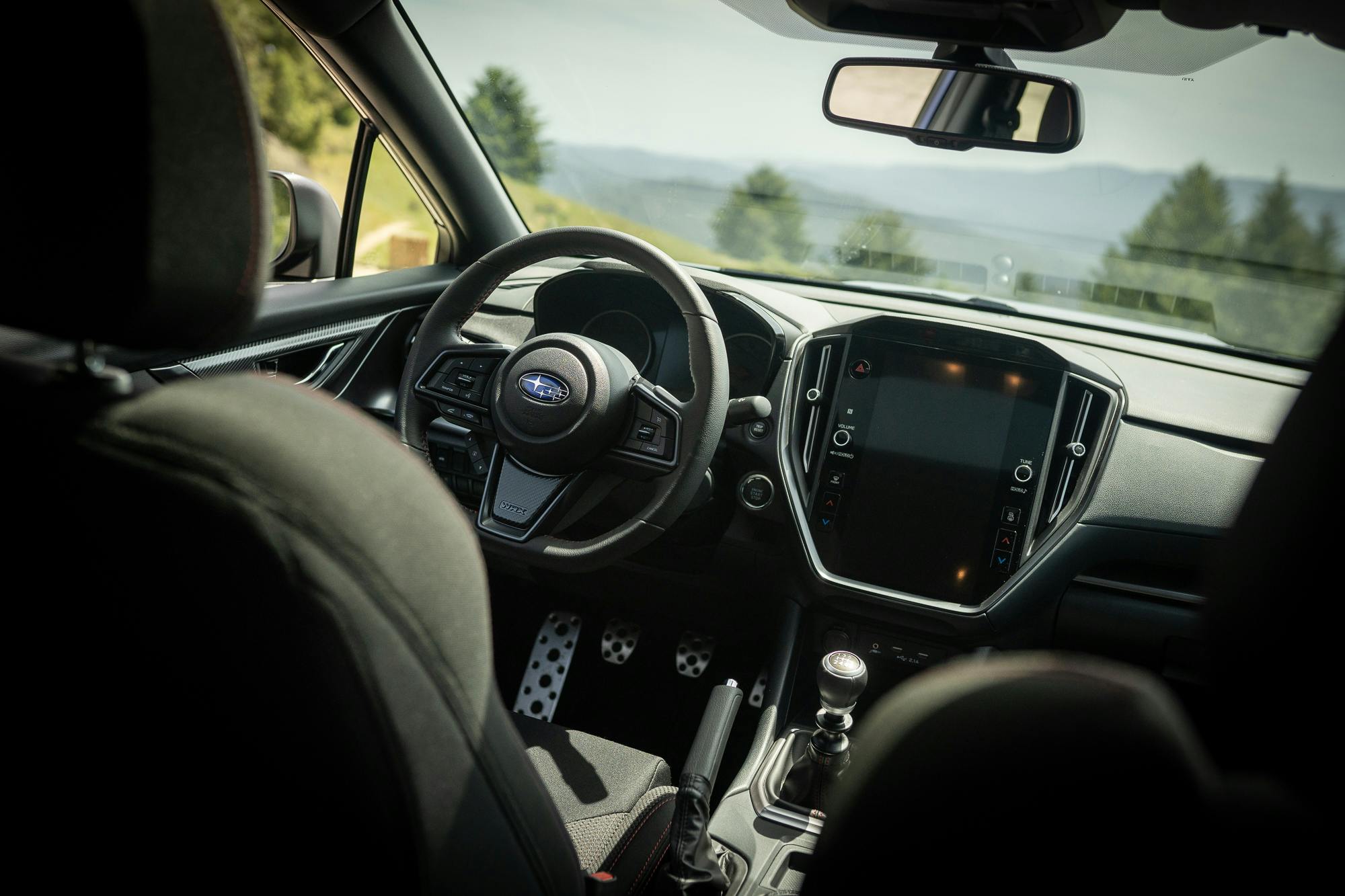
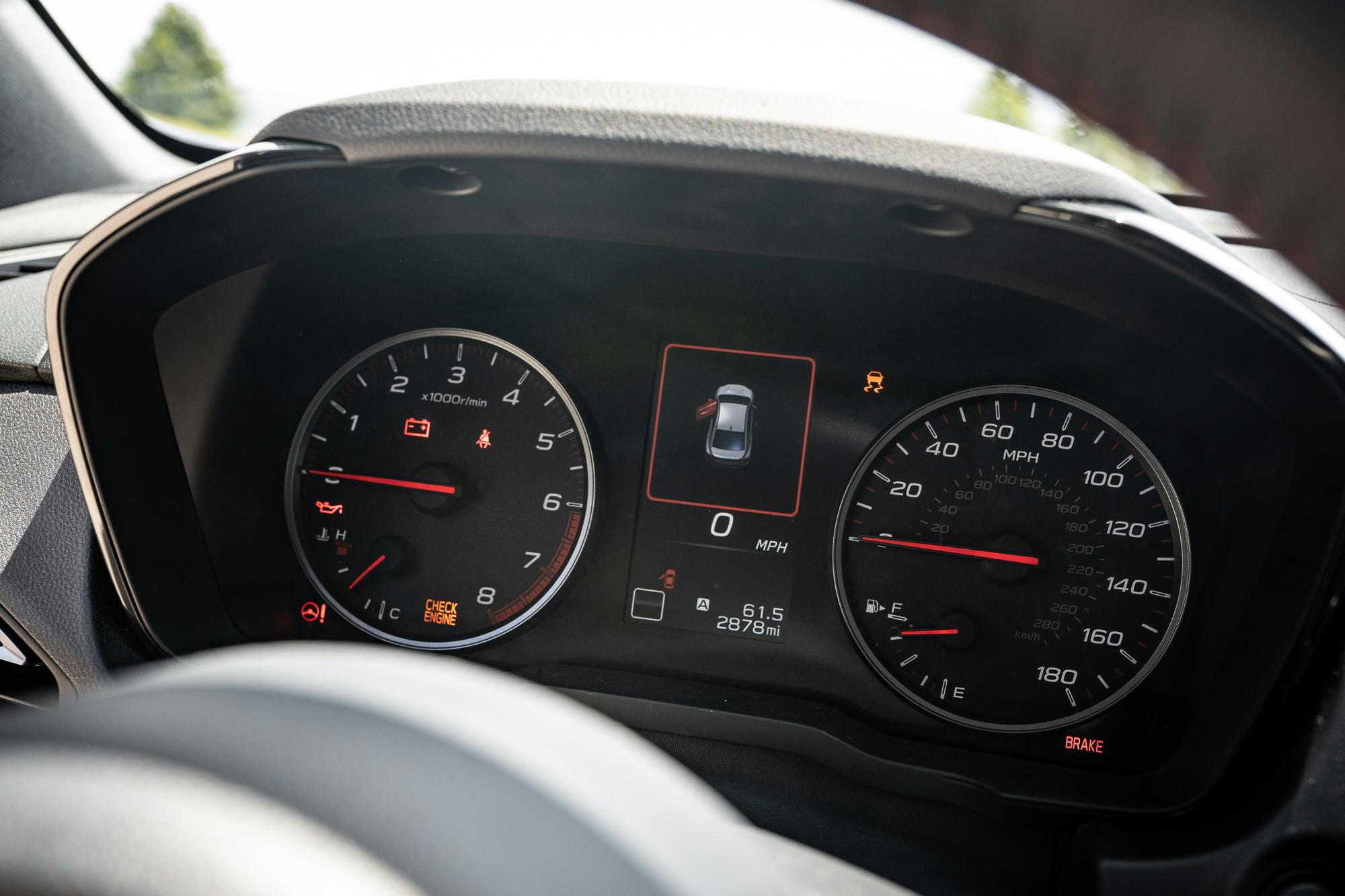

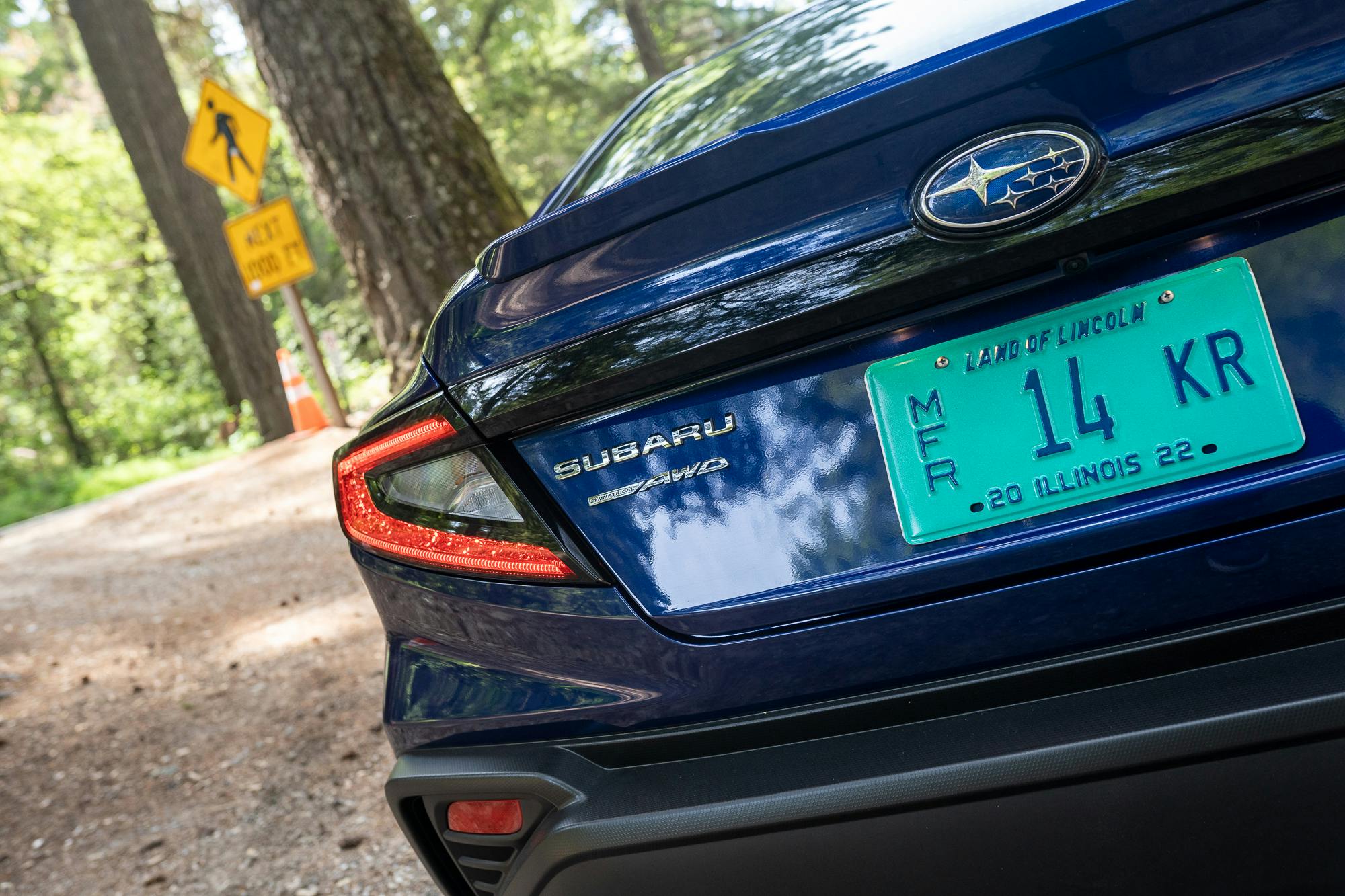
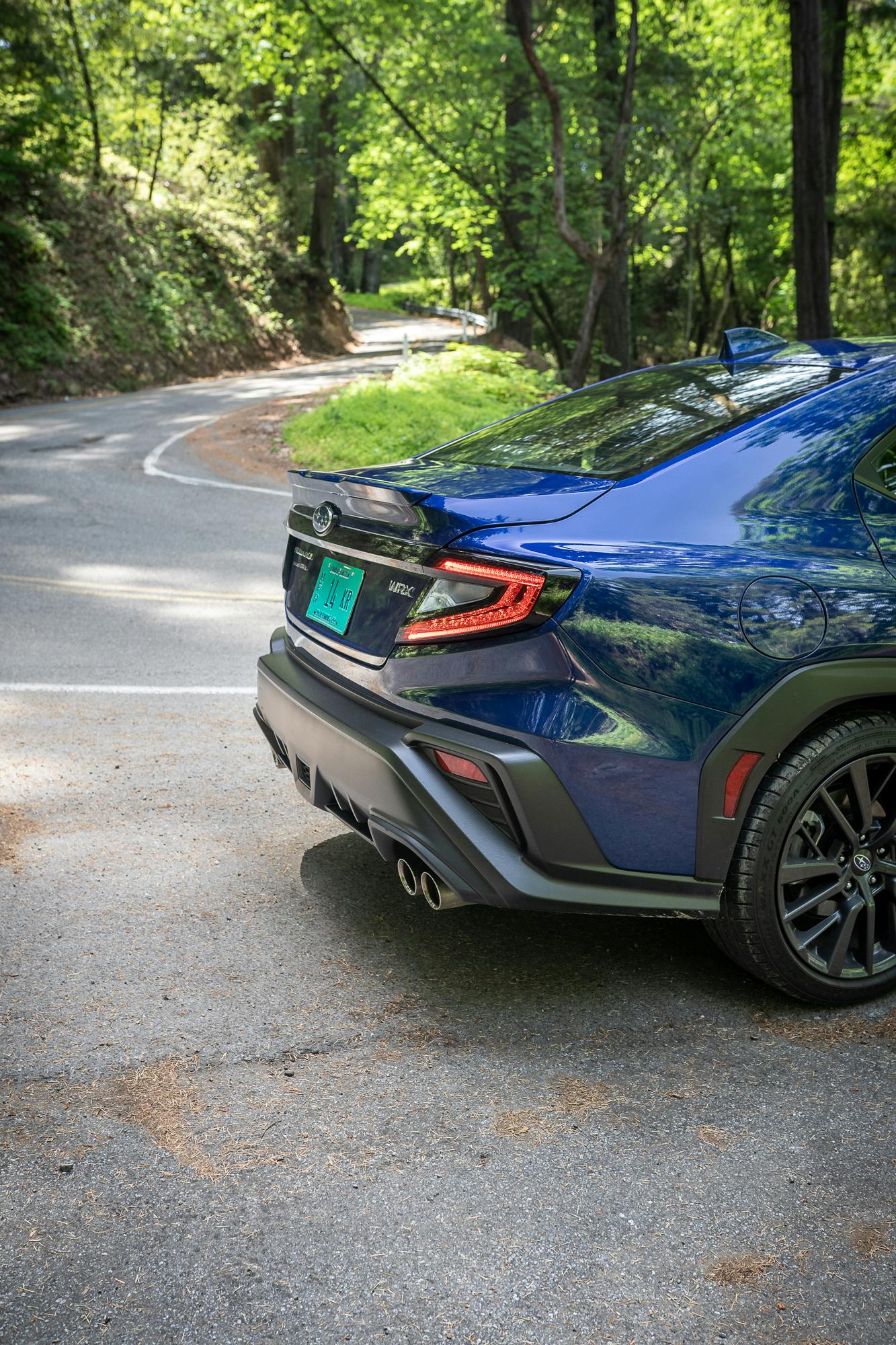
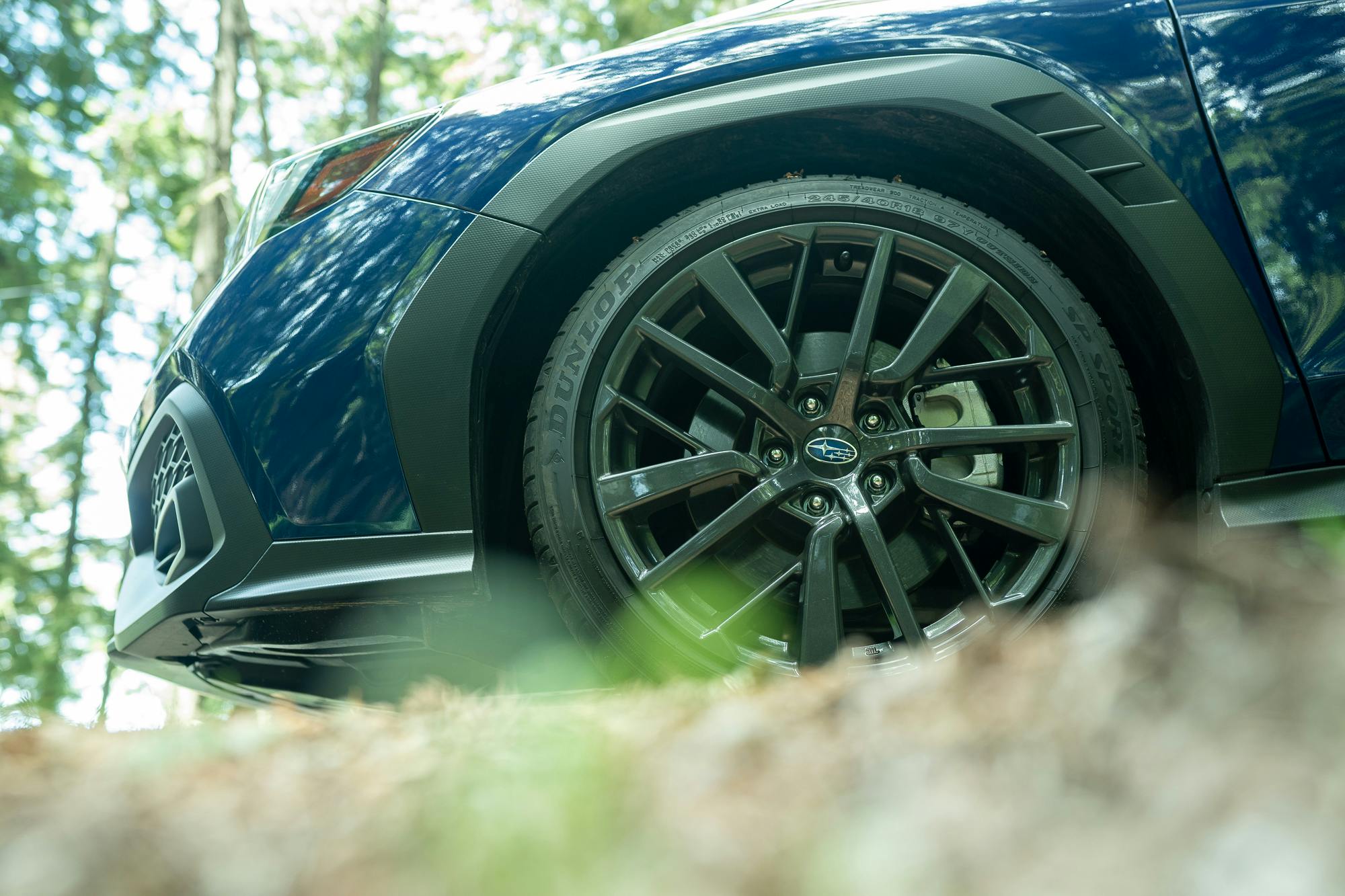
















And yet, there is absolutely NOTHING in this price bracket, at least as the base model. Bought new in Canada, my 2022 WRX base manual was $33,030 plus tax. No AWD option cars in that price range that have a hint of sport sedan. The GLI is $2,000 more with FWD and absolute garbage tires that let the car fall flat on its face. The GTI and Si is $3,000 more and still FWD. The Elantra N is $7,000 more and the front wheels, again, all that motivate. The Golf R is $12,000 more, quasi AWD (magic of the clutch pack and software). The WRX base is in a class of its own, feeling old school, providing power and drivetrain that is just not available anywhere near its price point, and can be used on track, on road, on gravel, on snow/ice…like nothing else can in poverty spec.
I agree Bill. I’m enjoying my 2022 WRX Base Manual.
Take the garbage dunlops off this car and you have an entirely different machine. The dunlops are loud stiff and rattle your teeth with every crack or pebble on the road. Incredibly bad choice in OEM . You can’t drive an hour in the car as stock without passengers tossing their cookies. New tires and it’s a wonderful car and you can use as daily driver and really really enjoy this car.
Allan,
What tires do you suggest? I just purchased a 2022 WRX and live in an area that gets snow. I think the ride is very stiff and loud and was hoping new tires would help. Recommendations please and thank you ……